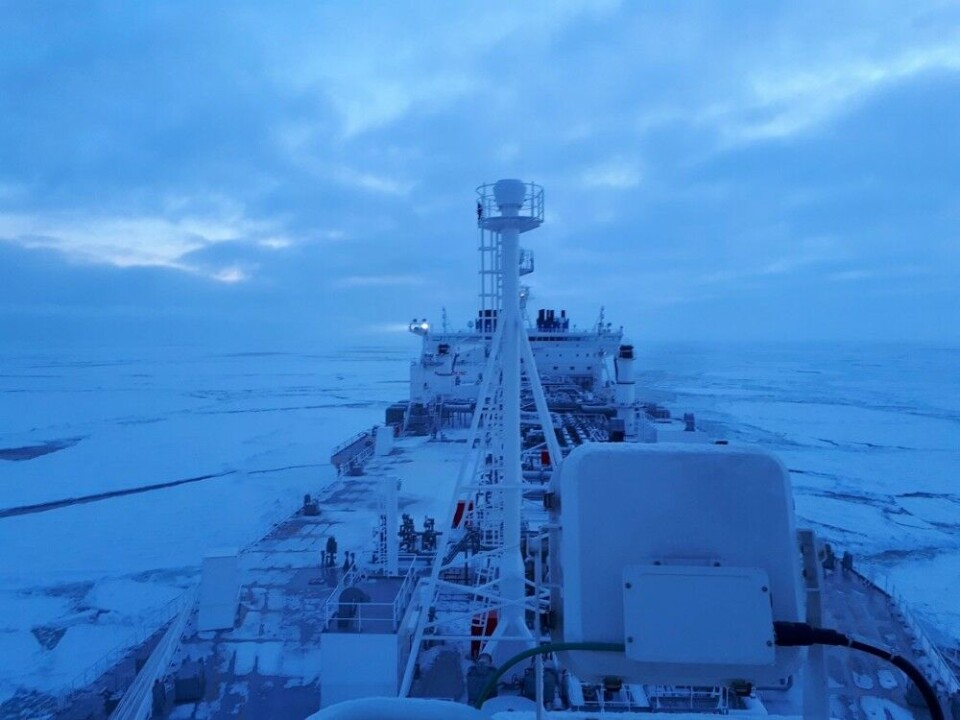
Two new-built tankers are crossing the Arctic in mid winter
The ships are on their way from China and South Korea and will have to break through up to 2 meter thick ice.
p.p1 {margin: 0.0px 0.0px 0.0px 0.0px; line-height: 19.0px; font: 16.0px ‘Times New Roman’; color: #000000; -webkit-text-stroke: #000000}p.p2 {margin: 0.0px 0.0px 0.0px 0.0px; line-height: 19.0px; font: 16.0px ‘Times New Roman’; color: #000000; -webkit-text-stroke: #000000; min-height: 18.0px}p.p3 {margin: 0.0px 0.0px 0.0px 0.0px; line-height: 20.0px; font: 17.0px Georgia; color: #292929; -webkit-text-stroke: #292929; background-color: #ffffff}p.p4 {margin: 0.0px 0.0px 0.0px 0.0px; line-height: 20.0px; font: 17.0px Georgia; color: #292929; -webkit-text-stroke: #292929; background-color: #ffffff; min-height: 20.0px}span.s1 {font-kerning: none}
It is Sabetta, the new Russian LNG terminal in Yamal Peninsula, which is the destination of the two ships that now are breaking their way through the Northern Sea Route.
The «Boris Sokolov», a 214 meter long condensate tanker, on the 11 December set out from Nansha, China. One day later, it was joined by the «Boris Davydov», a 299 meter long LNG carrier.
The ships are now both on the list of vessels sailing on the Northern Sea Route as provided by the Northern Sea Route Administration (NSRA). However, none of the vessels are visible in their current position on ship tracking services like the MarineTraffic.
According to the NSRA, the ships are due to arrive in Sabetta on 20th January.
It is an extreme voyage. Sailing conditions in the area are highly complicated with thick ice. Data from the Russian Arctic and Antarctic Institute show that practically the whole East Siberian Sea is covered by up to two meter thick one-year ice as well as older more solid ice. Also the Laptev Sea and the northeastern parts of the Kara Sea have thick ice layers.
According to Reuters, the ships are sailing without icebreaker assistance. Previously, only the «Eduard Toll» has conducted a similar voyage at this time of year. The ship in January 2018 made it to Sabetta from South Korea. However, that was with support from a nuclear-powered icebreaker.
The «Boris Sokolov» and the «Boris Davydov» both have Arc7 ice class and are able to break through about two meter thick ice layers.
The «Boris Sokolov» is built by the Guangzhou Shipyard and was handed over to its owner, Greek company Dynacom Tankers Management, on 4th December. It is the first vessel of the kind built for shipping of condensate from Sabetta.
The «Boris Davydov» is built at the Daewoo Shipbuilding and Marine Engineering (DSME) yard in South Korea. It is the 10th vessel of its kind built for the Yamal LNG project. It has a deadweight of 97,000 tons and can carry up to 172,600 cubic meters of LNG.
Another five carriers of the kind will in the course of 2019 be delivered by the Daewoo yard.
















